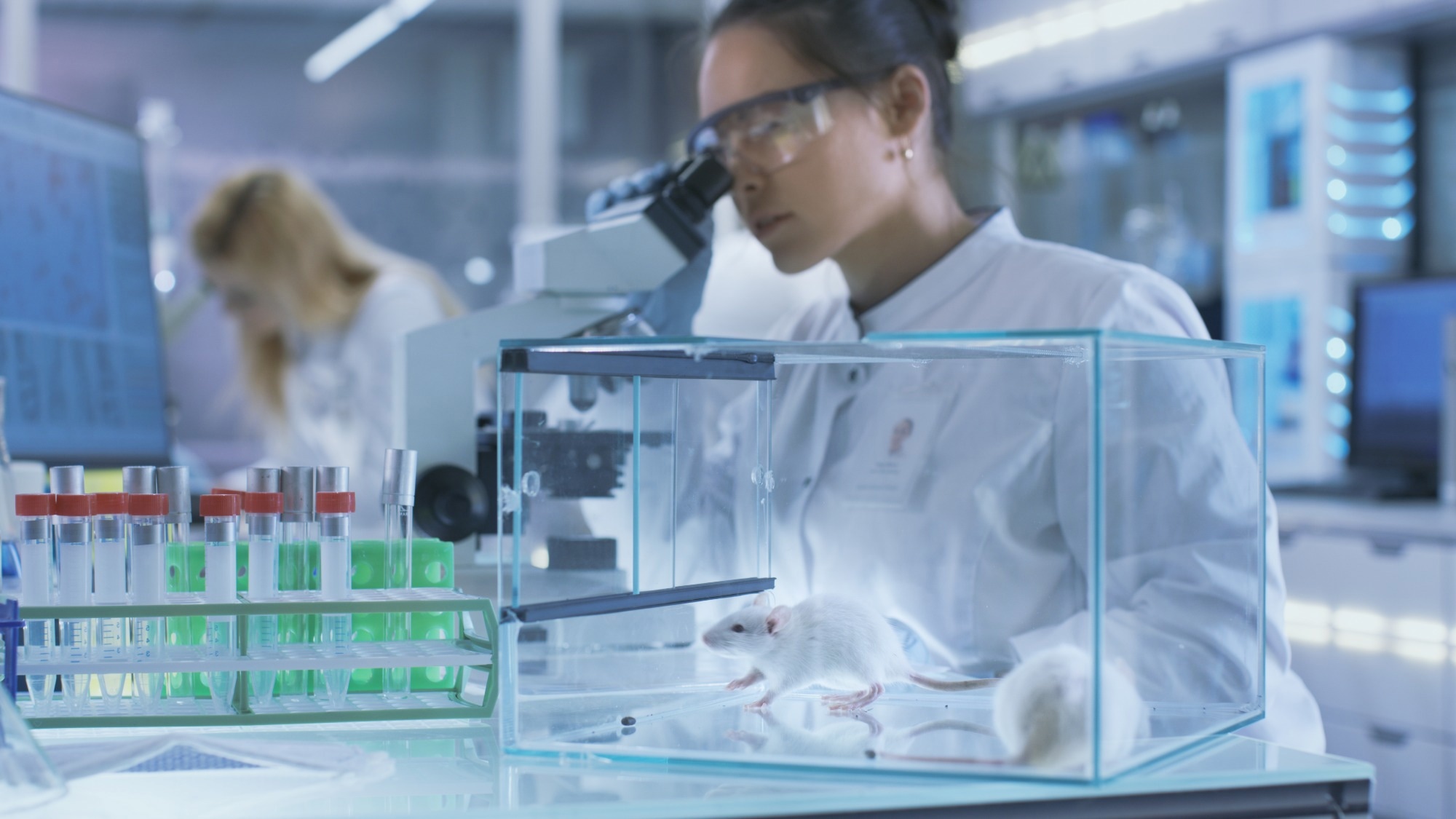A recent Communications Biology study investigated whether transcranial photobiomodulation (tPBM) treatment affected insulin therapy on microglial function in diabetic mice.
 Study: Transcranial photobiomodulation improves insulin therapy in diabetic microglial reactivity and the brain drainage system. Image Credit: Gorodenkoff/Shutterstock.com
Study: Transcranial photobiomodulation improves insulin therapy in diabetic microglial reactivity and the brain drainage system. Image Credit: Gorodenkoff/Shutterstock.com
Background
Diabetes mellitus (DM) is one of the most common metabolic diseases that has affected millions of people worldwide. This metabolic disorder is associated with blood glucose disorder that can induce many other complications, including cardiovascular disease events and cerebrovascular dysfunctions.
Previous studies have shown that chronic hyperglycemia enhances the expression of chemokines, cytokines, and oxidative stress to an abnormally high level, which triggers brain inflammation. DM-related chronic inflammation can activate microglia, a type of central nervous system immune cell (CNS).
Microglia become activated under chronic hyperglycemia and cause enlargement of cell bodies, increase pro-inflammatory factors, and elevate migration rates. It must be noted that the exact function of microglia in the manifestation of DM-related abnormalities of the brain is unclear.
Several studies have demonstrated that DM promotes dysregulation of microglial responses that cause cerebrovascular injuries through inflammation.
Cerebral vessels get damaged during chronic hyperglycemia because the brain receives very little blood, causing neuronal cell death. This event results in brain atrophy and other dysfunctions linked to memory and thinking.
Even though insulin treatment can positively regulate blood glucose levels when DM becomes a chronic disease, it cannot completely restore brain and microglial functions.
At present, the tPBM method has been used to treat many DM-mediated brain injuries, such as Alzheimer's and Parkinson’s diseases and intraventricular hemorrhage. This procedure could be exploited as an alternative non-invasive method for DM-mediated brain injuries.
Previous studies indicated improved diabetic foot ulcers and retinal vasculopathy using tPBM treatment. This therapeutic function has been attributed to the modulation of inflammatory factors.
Studies have shown that tPBM induces the brain drainage system by stimulating the meningeal lymphatic vessels (MLVs), which improves brain function.
About the study
The current study investigated the changes in microglia due to DM. It was hypothesized that tPBM treatment can improve the microglial function in diabetic mice under insulin therapy.
A type 1 diabetic mouse model was developed to evaluate the changes in microglial morphology. This model also revealed how these cells responded to cerebrovascular injury that occurred due to diabetes.
In this study, diabetic mice under insulin were subjected to tPBM (1267 nm) treatment. The effect of the treatment in improving microglial morphology and function was assessed.
The underlying mechanism that links tPBM with microglia was also assessed based on the meningeal lymphatic system and blood–brain barrier (BBB) of diabetic mice.
Study findings
The DM-mediated changes in microglial morphology and functions have been demonstrated in this study. The diabetic mice model revealed that microglia responding to DM was enhanced with the DM progression.
Consistent with previous study results, the current study indicated that DM caused a gradual reduction of microglial reactivity to brain injury due to photoablation of the cerebral vessels.
The DM mice model confirmed the hypothesis that tPBM improves the effect of insulin therapy based on microglial morphology and restoration of cerebrovascular injuries.
Compared to only insulin therapy, the combinational treatment improved microglial morphology and accumulation of microglial branches around the damaged cerebral vessels in diabetic mice subjected to the new treatment.
A previous study has indicated that the purinergic receptor P2RY12 is crucial for microglia to respond to extracellular nucleotides that are released due to brain tissue damage.
Mechanistically, tPBM affected the expression of microglial purinergic receptor P2RY12 by slowly reducing it in varied stages of DM. A significant reduction of P2RY12 expression in brain tissue of mice with DM was linked with microglial reactivity dysfunction and cerebrovascular injury.
DM-induced microglial dysfunction is significantly associated with IFN-γ. An increase in IFN-γ in the mouse brain tissues causes microglia dysfunction. Although tPBM treatment reduced the level of inflammatory factors, it failed to increase TJ protein ZO-1/Occludin expression.
In contrast to previous studies, which demonstrated the positive effects of tPBM on BBB permeability through the down-regulation of TJ proteins and increase of reactive oxygen species (ROS) production, this study observed a different finding.
Here, tPBM did not significantly influence BBB permeability, which could be due to differences in laser type, irradiation dose, and laser wavelength.
Conclusions
It was noted that DM is responsible for the changes in microglial morphology and functions that cause cerebrovascular injury. Significant effectiveness of tPBM treatment was observed to improve microglial morphology and functions of diabetic mice under insulin therapy.
Mechanistically, tPBM treatment activated the brain drainage system, causing a decrease in inflammatory factor IFN-γ level and an increase in microglial purinergic receptor P2RY12 expression in brain tissue.
Furthermore, the combinational treatment of tPBM and insulin treatment also effectively improved locomotor activity and energy expenditure in diabetic mice.